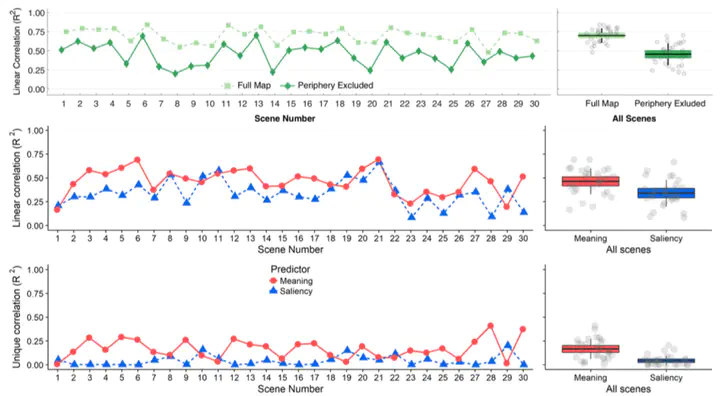
Abstract
Intelligent analysis of a visual scene requires that important regions be prioritized and attentionally selected for preferential processing. What is the basis for this selection? Here we compared the influence of meaning and image salience on attentional guidance in real-world scenes during two free-viewing scene description tasks. Meaning was represented by meaning maps capturing the spatial distribution of semantic features. Image salience was represented by saliency maps capturing the spatial distribution of image features. Both types of maps were coded in a format that could be directly compared to maps of the spatial distribution of attention derived from viewers’ eye fixations in the scene description tasks. The results showed that both meaning and salience predicted the spatial distribution of attention in these tasks, but that when the correlation between meaning and salience was statistically controlled, only meaning accounted for unique variance in attention. The results support theories in which cognitive relevance plays the dominant functional role in controlling human attentional guidance in scenes. The results also have practical implications for current artificial intelligence approaches to labeling real-world images.